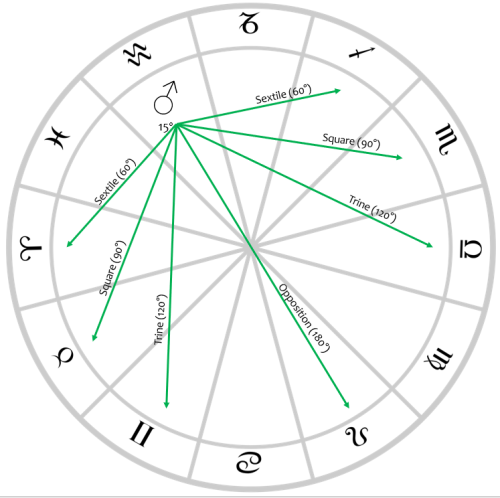Ready to take your astrology knowledge to the next level? Look no further! “How To Read Aspects In Astrology: Understanding Planetary Interactions And Their Impact” is here to guide you through the intricate world of planetary interactions and their influence on our lives. Whether you’re a seasoned astrologer or just starting out, this comprehensive guide will demystify the process of interpreting aspects, allowing you to gain deeper insights into your birth chart and the charts of others. With practical tips, informative explanations, and real-life examples, this book is your ultimate tool for navigating the complex web of astrology. Get ready to unlock the secrets of the stars and discover the hidden meanings behind planetary alignments.
The Basics of Astrological Aspects
Astrological aspects are an essential component of astrology that help us understand how different planets in our birth charts interact with each other. By examining these aspects, we gain deeper insights into our personality traits, relationships, and life experiences. In this comprehensive guide, we will explore the definition of astrological aspects, delve into their various types, discuss the importance of understanding aspects, and provide practical tips for interpreting them effectively.
Definition of Astrological Aspects
Astrological aspects refer to the specific angles formed between planets in the birth chart. These angles determine the energy and influence that planets have on each other, shaping various aspects of our lives. Each aspect carries a unique meaning and symbolizes different qualities and characteristics. By analyzing these aspects, astrologers can gain valuable insights into an individual’s personality traits, relationships, and life patterns.
Types of Astrological Aspects
There are numerous astrological aspects that can occur between planets. While some are considered major aspects due to their strong influence, others are categorized as minor aspects. Understanding the different types of astrological aspects is crucial for accurate interpretation and analysis.
Major Planetary Aspects
Conjunction
A conjunction occurs when two planets are in close proximity, usually within 10 degrees of each other. This aspect signifies a blending of energies, intensifying the traits and qualities associated with the planets involved. Conjunctions often indicate a strong influence between the planets and may suggest a significant focus in the individual’s life.
Opposition
Opposition happens when two planets are located exactly opposite each other, creating a 180-degree angle. This aspect represents the tension and contrast between the two planets involved. Opposing planets often symbolize a need for balance and integration of opposing forces in one’s life.
Square
A square occurs when two planets are approximately 90 degrees apart. This aspect signifies inner conflict, challenges, and friction between the planets involved. Squares often indicate areas of tension and struggle in an individual’s life, urging them to find ways to resolve conflicts and grow.
Trine
A trine occurs when two planets form a 120-degree angle with each other. This aspect represents a harmonious flow of energy and indicates natural talents and ease in expressing the qualities associated with the planets involved. Trines often signify areas of strength and favorable circumstances in an individual’s life.
Sextile
A sextile occurs when two planets form a 60-degree angle with each other. This aspect signifies opportunities, creativity, and positive interactions between the planets involved. Sextiles often suggest areas where an individual can make use of their potential and find favorable outcomes in their pursuits.
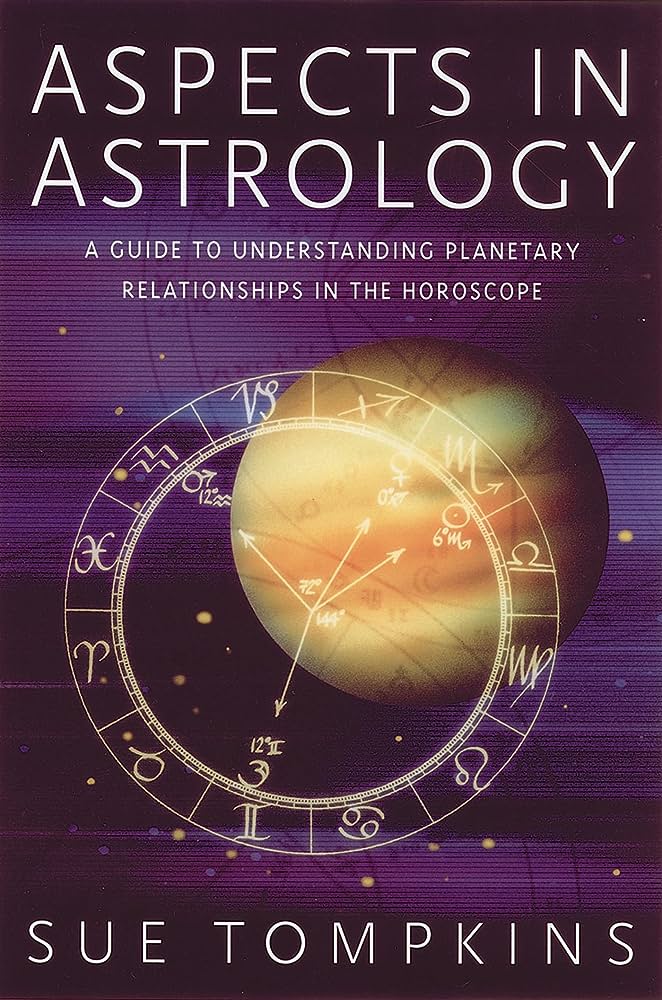
Minor Planetary Aspects
In addition to the major planetary aspects, there are also minor aspects that contribute to the overall astrological picture.
Semisquare
A semisquare occurs when two planets are approximately 45 degrees apart. This minor aspect signifies tension and potential irritations between the planets involved. Semisquares often highlight areas of growth and challenges that can lead to personal development.
Semisextile
A semisextile happens when two planets are approximately 30 degrees apart. This minor aspect represents subtle interactions between the planets involved. Semisextiles often indicate supporting influences and opportunities for cooperation.
Quincunx
A quincunx occurs when two planets are approximately 150 degrees apart. This minor aspect signifies a sense of unease and adjustment between the planets involved. Quincunxes often suggest areas of imbalance and the need for adaptability and flexibility in one’s approach.
Sesquisquare
A sesquisquare happens when two planets are approximately 135 degrees apart. This minor aspect represents a blend of tension and motivation between the planets involved. Sesquisquares often denote areas of challenge and the need for persistence and determination to overcome obstacles.
Importance of Understanding Aspects
Understanding astrological aspects is crucial for gaining a comprehensive understanding of an individual’s birth chart and their unique personality and life experiences. By examining the aspects in a birth chart, astrologers can identify patterns, strengths, and challenges that a person may encounter throughout their life. This knowledge allows individuals to make informed decisions, navigate relationships effectively, and harness their potential for personal growth and fulfillment.
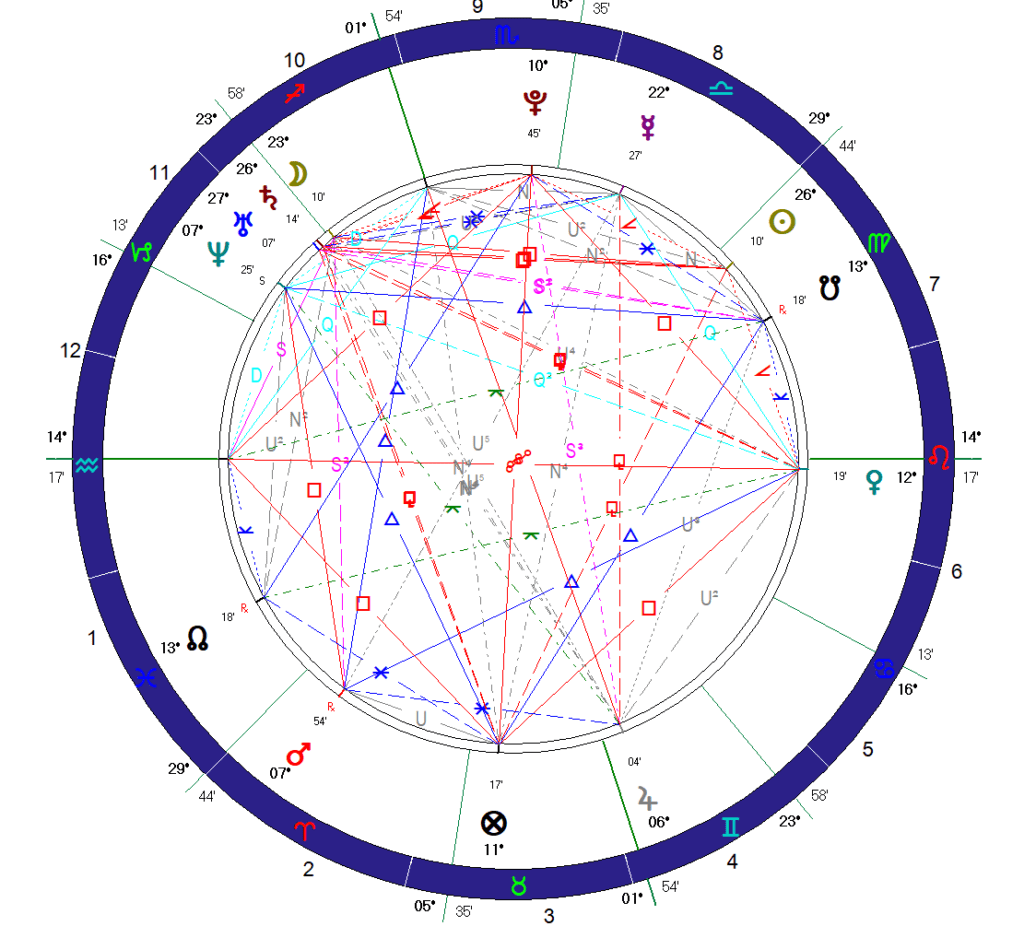
Interpretation of Aspects
Using the Natal Chart
To interpret astrological aspects, astrologers primarily rely on the natal chart, also known as the birth chart. The natal chart is a snapshot of the sky at the exact moment of an individual’s birth and provides valuable information about their personality, relationships, and life experiences. By analyzing the positions and aspects of planets in the birth chart, astrologers can uncover key insights and paint a detailed picture of an individual’s astrological makeup.
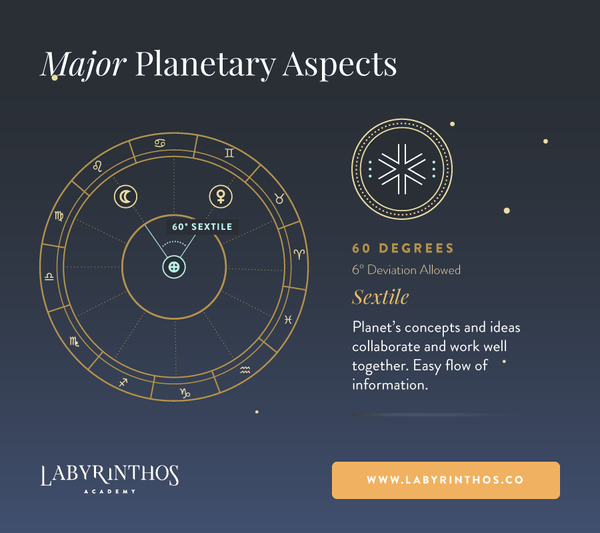
Understanding Major and Minor Aspects
When interpreting aspects, it is essential to differentiate between major and minor aspects. Major aspects, such as conjunctions, oppositions, squares, trines, and sextiles, have a more significant impact and often shape the core themes and dynamics of an individual’s life. Minor aspects, on the other hand, contribute to the overall complexity of the birth chart without exerting as profound an influence.
Considering Orbs and Strength
Another important factor to consider when interpreting aspects is the concept of orbs and strength. Orbs refer to the allowable margin of error when examining the exactness of an aspect. A tight orb indicates a stronger influence, while a wider orb suggests a weaker connection between planets. By considering the orbs of each aspect, astrologers can determine the potency and significance of the interactions between planets.
Furthermore, the overall strength of the planets involved in an aspect should be taken into account. Planets in their sign of rulership or exaltation often carry more weight and influence, while planets in challenging positions, such as detriment or fall, may weaken the impact of an aspect.
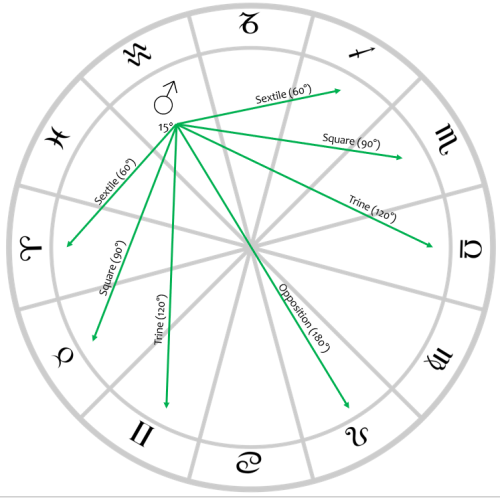
Interactions Between Different Planet Pairs
Aspects between different planet pairs offer valuable insights into various aspects of an individual’s life. Let’s explore some of the significant interactions between different planets and their implications.
Sun-Moon Aspects
Aspects between the Sun and the Moon often reflect the dynamic interplay between one’s ego (Sun) and emotions (Moon). Harmonious aspects, such as a conjunction or trine, indicate a positive integration of these energies, fostering a sense of self-awareness and emotional stability. Challenging aspects, such as a square or opposition, suggest potential conflicts between one’s identity and emotional needs, requiring conscious integration and self-reflection.
Sun-Mercury Aspects
Aspects between the Sun and Mercury shed light on the relationship between one’s core identity (Sun) and communication style and thought processes (Mercury). Positive aspects, such as conjunctions or trines, suggest ease in expressing oneself, clear communication skills, and mental agility. Challenging aspects, such as squares or oppositions, may indicate difficulties in finding one’s voice, scattered thinking patterns, or challenges in expressing oneself effectively.
Sun-Venus Aspects
Aspects between the Sun and Venus reveal the connections between one’s self-expression and relationships, values, and aesthetics. Harmonious aspects, such as conjunctions or trines, point to a natural charm, artistic talents, and harmonious relationships. Challenging aspects, such as squares or oppositions, may indicate conflicts between personal expression and relational harmony, or a need to navigate one’s values and relationships more consciously.
Sun-Mars Aspects
Aspects between the Sun and Mars illuminate the interaction between one’s core identity (Sun) and assertiveness, passion, and drive (Mars). Harmonious aspects, such as conjunctions or trines, indicate a strong sense of self-confidence, motivation, and a healthy assertiveness. Challenging aspects, such as squares or oppositions, may bring forth conflicts between personal desires and external actions, urging the individual to find balance and harmony between their identity and ambitions.
Understanding Inner and Outer Planet Interactions
In astrology, planets are divided into two categories: inner planets (Mercury, Venus, Mars) and outer planets (Jupiter, Saturn, Uranus, Neptune, Pluto). Understanding the interactions between these different planetary groups offers further insights into an individual’s life patterns and experiences.
Inner Planet Interactions
Interactions between inner planets often manifest in our day-to-day experiences and personal relationships. Aspects between Mercury, Venus, and Mars play a significant role in shaping our communication style, relationships, and assertiveness. These interactions provide insight into our social dynamics, intellectual pursuits, and how we express our desires and attract others.
Outer Planet Interactions
Interactions between outer planets, such as Jupiter, Saturn, Uranus, Neptune, and Pluto, reflect more significant and long-lasting themes in our lives. Aspects involving these planets often indicate larger societal or generational influences, highlighting themes such as expansion, structure, rebellion, spirituality, and transformation. Studying the aspects between outer planets provides a deeper understanding of the broader context in which our individual experiences unfold.
Impact of Retrograde Planets
Retrograde planets present a unique dynamic in astrology as they appear to move backward in the sky. When interpreting aspects involving retrograde planets, it is important to take into account the inward, introspective energy they bring. Retrograde planets often prompt us to reflect, review, and rectify certain areas of our lives, offering an opportunity for growth and self-improvement.
Aspect Patterns and Configurations
Beyond individual aspects, the overall pattern formed by multiple aspects in the birth chart adds an additional layer of meaning and complexity. Let’s explore some common aspect patterns and configurations.
Grand Trine
A Grand Trine occurs when three planets form an equilateral triangle in the birth chart. This configuration symbolizes a harmonious flow of energy between the planets involved, creating an abundance of natural talents and favorable circumstances. Individuals with a Grand Trine often possess innate abilities and an effortless path to success in the areas represented by the involved planets.
T-Square
A T-Square occurs when two planets form a square aspect, and a third planet opposes the midpoint between them, creating a T-shaped pattern. This configuration indicates tension, challenges, and a need for resolution and growth. T-Squares often push individuals to confront and overcome obstacles in their lives, leading to greater personal development and self-awareness.
Grand Cross
A Grand Cross occurs when four planets form two sets of oppositions, creating a square aspect pattern in the birth chart. This configuration represents intense and dynamic energy, generating both challenges and opportunities for growth. Individuals with a Grand Cross often face significant tests and turning points in their lives, requiring them to integrate opposing forces and find balance amidst conflicting energies.
Yod
A Yod, also known as the “Finger of God,” occurs when two planets form a sextile aspect, and a third planet forms an inconjunct aspect (150 degrees) to both. This configuration signifies a focal point or special mission in an individual’s life, often associated with spiritual or karmic themes. Yods indicate a need for adjustment, redirection, and embracing their unique purpose.
Stellium
A Stellium occurs when three or more planets are located within a close range of each other in the birth chart. This configuration suggests a concentration of energy in a specific area of an individual’s life, highlighting an intense focus and potential for significant achievements and challenges. Stelliums often shape an individual’s core identity and life path, indicating areas of specialization and great personal significance.
Transits and Progressions
Transits and progressions are essential tools in predictive astrology, enabling astrologers to analyze the current and future influences on an individual’s birth chart.
Interpreting Transiting Aspects
Transiting aspects occur when the current positions of the planets form angles with the planets in an individual’s birth chart. By analyzing these transits, astrologers can gain insights into the unfolding energies and themes in a person’s life. Challenging transiting aspects can indicate periods of growth, change, or challenges, while harmonious transits often bring opportunities and favorable circumstances.
Predictive Astrology with Progressions
Progressions involve advancing the positions of the planets in the birth chart to represent symbolic timing in a person’s life. By progressing the birth chart, astrologers can analyze long-term trends, significant life events, and personal growth. Progressed aspects offer valuable insights into an individual’s evolving consciousness, relationships, and life direction.
Astrology Software and Online Resources
To aid in aspect interpretation and chart analysis, astrology software and online resources are valuable tools for both beginners and experienced astrologers.
Using Software for Aspect Interpretation
Astrology software provides comprehensive features and functions that simplify the process of calculating and interpreting aspects. These programs generate accurate birth charts, aspect reports, and transit analyses, saving time and ensuring precise calculations. Some popular astrology software options include Solar Fire, AstroSeek, and Astro.com.
Online Resources for Aspect Analysis
Apart from astrology software, there are also numerous online resources available for comprehensive aspect analysis. Websites and forums specializing in astrology provide detailed explanations of different aspects, enabling individuals to deepen their knowledge and understanding. Some reputable online resources for aspect analysis include AstroDienst, Cafe Astrology, and The Astro Codex.
Putting It All Together: Case Studies
To illustrate the practical application of aspect interpretation, let’s explore two case studies analyzing real-life birth charts and identifying key aspects and their impact.
Analyzing Real-Life Birth Charts
In birth chart analysis, focus on the aspects involving the Sun, Moon, Ascendant, and personal planets (Mercury, Venus, Mars) to gain insights into an individual’s core identity, emotions, and communication style. Pay attention to major aspects like conjunction, opposition, square, trine, and sextile, as they often indicate significant themes and dynamics in a person’s life.
By carefully examining the aspects in a birth chart, astrologers can uncover the individual’s strengths, challenges, and potential developmental areas. Remember to consider the orbs and strength of the aspects, as well as the interactions between different planet pairs, to paint a detailed and accurate picture.
Identifying Key Aspects and Their Impact
Once the key aspects in a birth chart have been identified, it is essential to analyze their impact on different areas of an individual’s life. Consider the major planetary aspects in relation to the houses they fall into, as well as any key themes associated with the involved planets. The combination of planets, signs, houses, and aspects provides a rich tapestry of information that allows for a comprehensive understanding of an individual’s unique astrological makeup.
By identifying the key aspects and their impact, astrologers can provide valuable insights, guidance, and solutions to help individuals navigate their life journey with clarity and self-awareness.
In conclusion, understanding astrological aspects is fundamental to gaining a comprehensive understanding of an individual’s birth chart and their unique personality and life experiences. By examining the angles formed between planets, interpreting major and minor aspects, considering orbs and strengths, analyzing interactions between different planet pairs, and exploring aspect patterns and configurations, astrologers can unlock a wealth of information in the birth chart. Transits and progressions further enhance predictive astrology, providing insights into current and future influences. With the aid of astrology software and online resources, analyzing aspects becomes more accessible and accurate. By putting all the elements together and analyzing real-life birth charts, astrologers can identify key aspects and their impact, helping individuals navigate their life journey with clarity and self-awareness.
